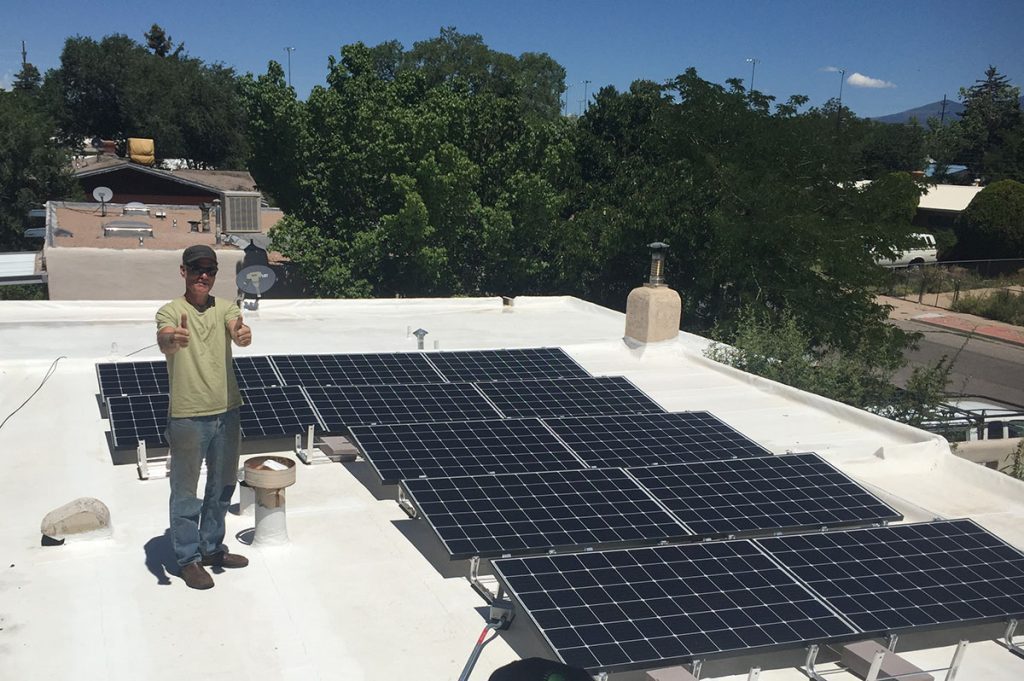The Easy Handy Guide for Solar Power Maintenance


Solar is a great option because it doesn’t need a lot of upkeep and lasts for a long time. However, the elements listed in the glossary below can help you ensure that your array is operating to its full potential. Maintaining your solar panels will help them perform at their peak efficiency.
Solar Panel Cleaning Supplies
For those who have the proper tools, cleaning solar panels is simple. It’s always a good idea to keep a supply of solar panel cleaning supplies on hand.
Roof Rake
Snow can be removed from solar panels with a roof rake, a long pole with an attachment. Avoid damaging the solar panels by attaching a piece of sandpaper to the end.
Soap
Solar panels can be cleaned without the use of special soaps. Dish soap is an excellent choice for removing tough stains. It may, however, leave a residue on the solar panels, reducing their ability to absorb light.
Rags
They were cleaning solar panels with a non-abrasive cloth such as a household cleaning rag. They’re good for scrubbing tough spots if you’re willing to climb up on top of things. They can also protect roof rakes from the cold during the winter months.
Squeegee
Remove excess water with a squeegee. While an old squeegee can scratch the glass or leave streaks if used incorrectly, a new one is better.
Sponge
Another non-abrasive method of cleaning solar panels is using sponges. However, it will necessitate climbing onto the roof if it is not attached to a pole.
Telescopic Pole
Individuals can access high spots by using telescopic poles.
Water Fed Brush
A garden hose or specially treated water can feed the water-fed brushes; cleaning the panel while rinsing is easier with this brush.
Solar Panel Cleaning Options
Different cleaning methods will be necessary depending on the solar panel’s condition. Various solar panel cleaning elements can help you choose the best option for your installation.
Cleaning Robot
For personal use, individuals can purchase a cleaning robot or hire a professional to do the job. They work well for cleaning difficult-to-reach solar panels, but they aren’t perfect.
Cleaning Professional
The customer can avoid getting on the roof if the solar panels are in a difficult-to-reach location by hiring a professional to do the work for them.
Reverse Osmosis Water
It is only when all the minerals have been removed from the water that they can wash clothes without leaving spots.
Deionized Water
When water is deionized, all the ions are removed from it. Although water does not have a charge, it is attracted to objects with charge, such as dirt.
Self-Cleaning
When a solar owner allows regular rainstorms to clean their solar panels, this is called self-cleaning. Whether or not the solar panels are in an area with frequent rainstorms, it may not be necessary to wash the solar panels.
Typical Causes of Solar Array Inefficiency
Many factors can contribute to solar panel inefficiency. Identifying the source of your power loss is the first step in determining how to fix it.
Accumulated Debris
Solar panels collect dust, pollution, and pollen from the air. If it isn’t cleaned regularly, this accumulation may prevent the solar panel’s components from receiving enough sunlight.
Hail
Most solar panels have been subjected to extensive testing. Hail that is the size of a ping-pong ball at 70 mph can be withstood by most.
Trees
Trees obstruct the sun’s rays from reaching solar panels despite their environmental benefits. Clean-up requirements are also affected by these factors. Trees that can’t be trimmed or removed reduce the effectiveness of solar power on residential roofs.
Fallen Components
As with any other piece of technology, panel drops are never a good thing to have to happen. The likelihood of micro-cracks forming in a solar panel increases if the panel is dropped.
Golf Balls
Although living near a golf course may appear desirable, the sound of golf balls whizzing by is anything but. Solar panels could be shaded or at the very least have micro-cracks created if they are hit precisely.
Pests
Pests Under solar panels, pests such as birds often build nests. If this occurs, the animal may interfere with the array, reducing its effectiveness.
Production Standards and Monitoring
Keeping an eye on your solar panels is essential to getting the most out of them. A good place to start learning about the fundamentals is with manufacturer product guidelines and controls.
Solar Panel Production Standards
The degradation rate of most solar panels is around 3% per year. Because of this, they can last for more than 25 years. Solar power production and usage can be monitored by some inverters, such as the SMA, which works better with clean panels.
Utility Solar Metering
Even though solar energy frees people from dependence on fossil fuels, they are still bound to the grid. Net metering allows the utility company to track how much electricity is generated and consumed on the grid.
Solar Product Warranties
One of the best ways to make sure your panels last long as possible is to get a warranty. Check out the elements below to learn more about solar securities and insurance options.
Solar Panel Warranties
With an efficiency of 80%, the typical solar panel manufacturer’s warranty is 25 years. There are, however, solar panels with guaranteed efficiencies that are higher still.
Homeowners Insurance
Suppose something goes wrong with the solar array, whether due to debris or other items breaking the panels, homeowner’s insurance will cover it. Most homeowner’s insurance policies don’t charge extra for adding solar panels, but it’s always a good idea to check first.
Solar Panel Maintenance Costs
The customer is responsible for all maintenance costs. Having someone come out once a year to clean the solar panels will cost more if they have a system that they cannot reach. But other than cleaning, solar systems don’t need much attention.
